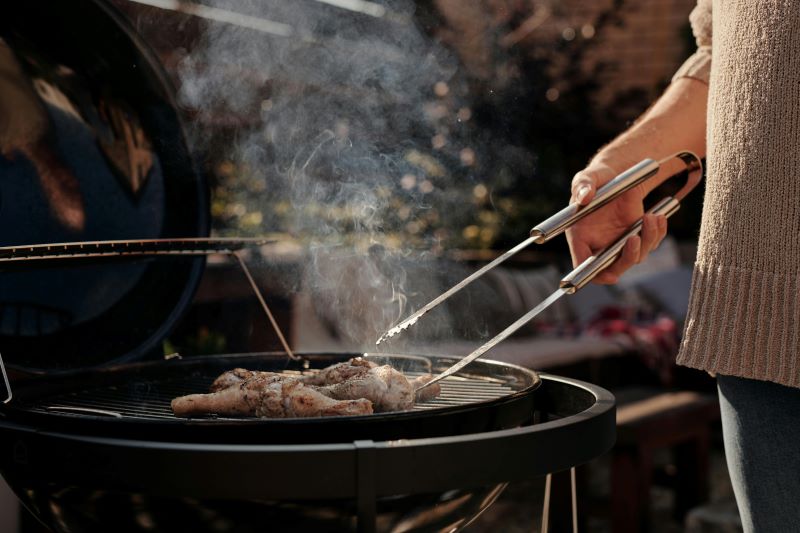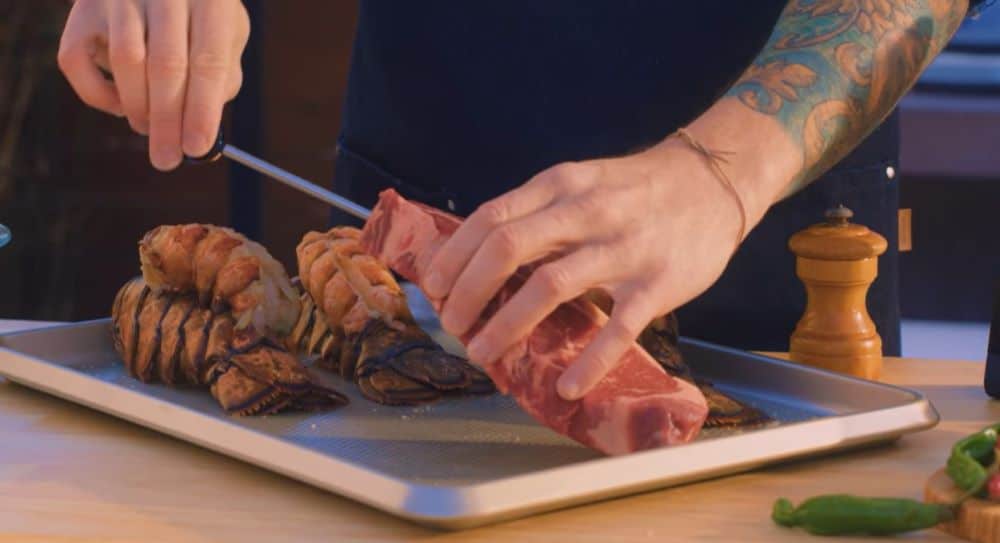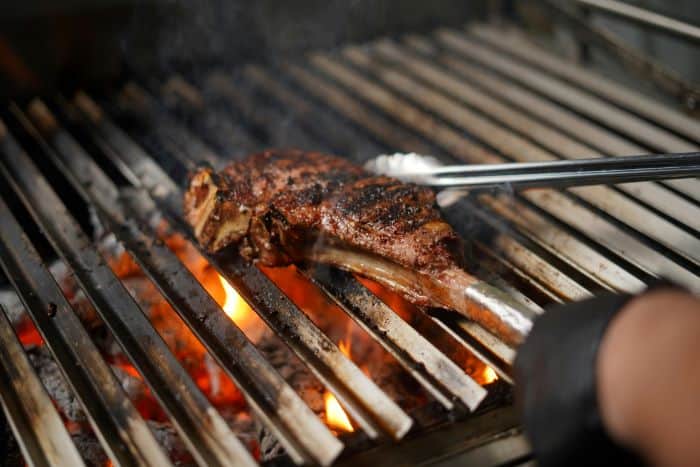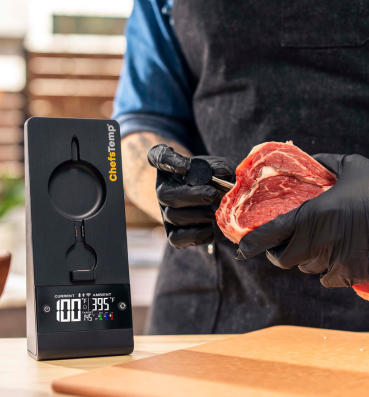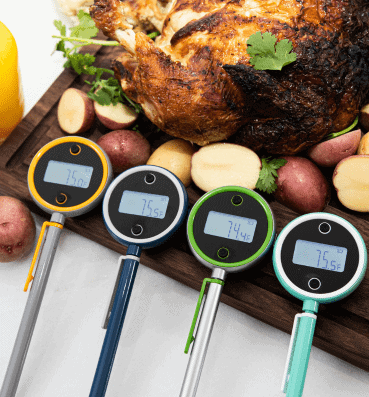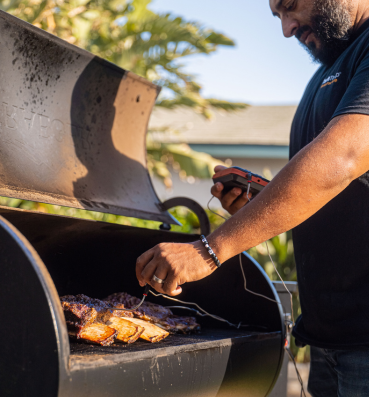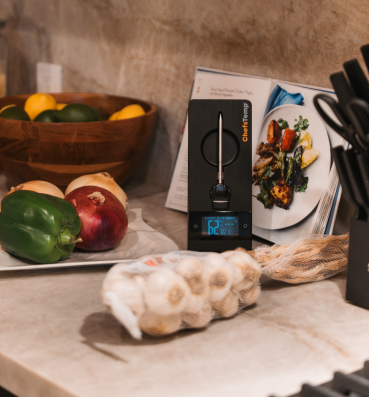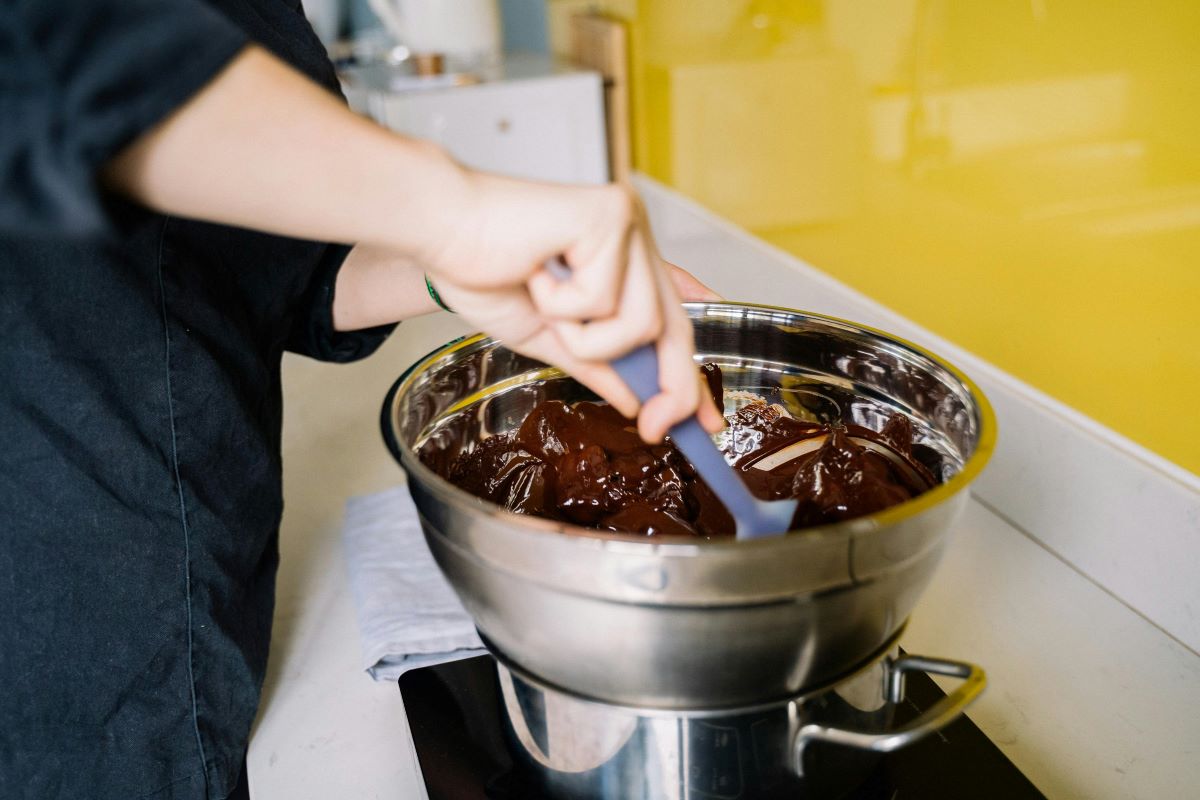
Thermometer and Tempering Homemade Chocolate
Everyone loves chocolate but not everyone knows how challenging it can be to temper it. While demanding, working with and tempering chocolate is a rewarding process. If you’re into making chocolate-based desserts at home, this guide covers everything you need to know about using a thermometer for tempering homemade chocolate and how to get the best results.
Table of Contents
What is Tempering in Cooking?
A perfectly tempered chocolate is shiny and comes with a pleasant snap when you break it off from the rest of the bar. That’s what tempering can do with chocolate.
Chocolate is made up of cocoa butter with various fat crystals. Each crystal has varying density, stability, and melting point levels.
The form 5 crystal (known as the beta crystals) is the only form that is stable enough to achieve your desired shine and snap. It has a higher melting point than the other crystals present in cocoa butter.
Tempering requires melting the fat crystals and cooling to allow the formation of small crystals. The chocolate is once again heated to achieve the right consistency that makes it easy to work with.
Why Do You Need to Temper Chocolate?
Tempering chocolate makes it easier to incorporate into other recipes, such as making pastries and confectionery. When done correctly, tempering chocolate can produce most, if not all of the following results:
- It makes the chocolate appear smooth and shiny
- It is easier to turn out the chocolates
- It snaps cleanly when you break it up
Tempering is a cooking skill and technique that any aspiring dessert maker has to master. It achieves a smooth and glossy texture on the chocolate instead of being bumpy, brittle, and dull. When the chocolate is like this, it can be difficult to work with this ingredient.
What You Need for Tempering Homemade Chocolate
Tempering is critical to be able to work with chocolate as an ingredient. To achieve the best tempering results, you need a few tools to get the job done.
The most important tool when tempering chocolate is a thermometer that can give readings up to 130 degrees F. You should never temper chocolate without using a thermometer because you must constantly check the temperature of the chocolate during the tempering process. Also, you want to monitor how the temperature changes throughout to achieve your desired result. It also depends on the type of chocolate you use.
Another tool you need for tempering homemade chocolate is a high-temp silicone spatula. This tool is essential when scraping chocolate as you temper it. The silicone material ensures it can withstand the highest temperatures and makes it easy to grip. Choose silicone spatulas rated for high temperatures to ensure that it is safe to use when tempering.
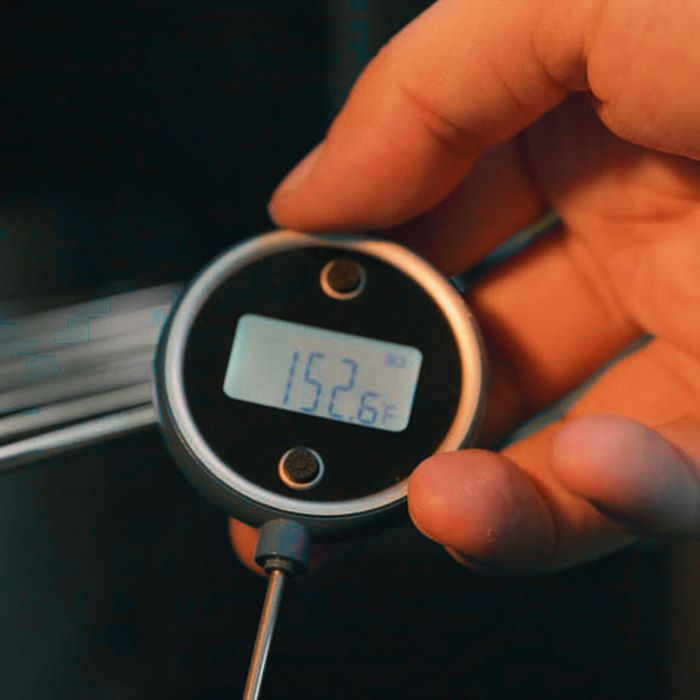
Importance of Temperature When Tempering Chocolate
Temperature control is the most essential aspect of tempering homemade chocolate. As mentioned earlier, the tempering process will depend mainly on the type of chocolate you use as it will require varying temperature levels.
Here is an overview of the ideal temperature changes for the chocolate during the tempering process:
- Dark Chocolate – The melting temp is 115-120 F and the cooling temp is 84 F. The re-warming temp is 87-90 F.
- White and Milk Chocolate – The melting temp is 105-110 F and the cooling temp is 81 F. The re-warming temp is 85-87 F.
Tempering Homemade Chocolate: Step-By-Step Guide
There are three methods you can use for tempering homemade chocolate: hot water bath, seeding, and tabling. Follow the steps for tempering chocolate for each method below.
Method 1: Hot Water Bath
Tempering chocolate with a hot water bath is the easiest method, and an old-fashioned one at that. For this method, you will need the following:
- A large bowl or heat proof container
- A container for the cold water (with ice cubes)
- Wooden spatula or spoon
- Thermometer
Add the chopped chocolate into the large bowl over a boiling water. Use the thermometer to continually monitor the temperature of the chocolate and ensure that it does not exceed the maximum temperature for the specific type of chocolate. Once you’ve reached the melting temperature, take the chocolate out of the hot water bath.
Place the large bowl with the melted chocolate above the container filled with cold water. Continue stirring until the chocolate cools again. Remove it from the cold water container and stir the temperature until it reaches the cooling temperature. And then put the chocolate back again into the boiling water or hot water bath until it reaches the rewarming temperature.
Method 2: Seeding
Seeding is the second technique used for tempering chocolate. Start this by chopping the chocolate into fine pieces or you can use chocolate drops instead as they melt more easily.
You will need the following for tempering chocolate using the seeding method:
- A mixing bowl
- An extra bowl
- Thermometer
Melt three-quarters of the chocolate using the hot water bath method above until it reaches the melting temperature. Remove the bowl from the boiling pan. Place a third of the melted chocolate into a separate bowl.
Add the remaining solid chocolate together with the melted chocolate. Keep stirring until they have reached the cooling temperature.
Now, take the chocolate you set aside earlier from the melted batch. Add it to the rest of the mixture. The different temperatures should help the mixture reach the rewarming temperature.
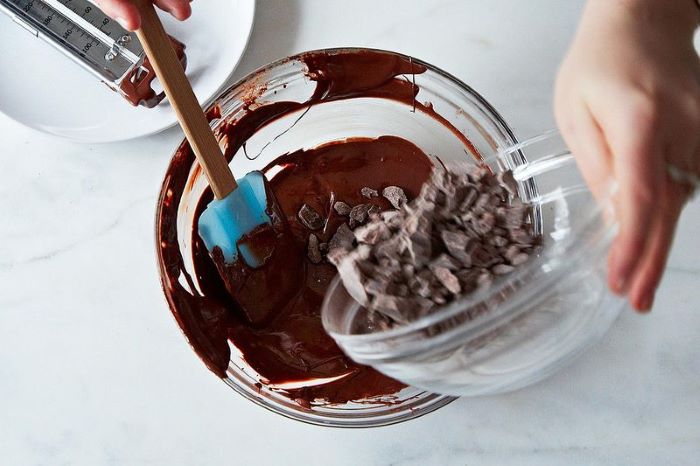
Method 3: Tabling
The third method for tempering chocolate is called tabling. It is the most complicated technique and involves working on a marble worktop.
But why do you need a marble working surface for this tempering method? Marble feels much colder than other types of surfaces. This stone material has incredible density, high thermal mass, and excellent heat capacity. Simply put, heat energy can easily transfer on to a marble surface but it requires a lot of heat energy for its temperature to rise. When you think of a marble surface, you’re not feeling the coolness of the marble but instead your heat energy is quickly absorbed by the marble and cools you down in the process.
When you use this same concept for melting chocolate, it’s easy to see why marble is the recommended surface type to help cool it down faster. The heat energy from chocolate transfers quickly onto the marble, allowing it to cool down faster than any other surfaces.
Start by melting the chocolate over a hot water bath until it reaches the melting temperature. Check with a thermometer constantly to ensure you get the right temperature. Pour about 2/3 of the melted chocolate onto a marble surface and leave the 1/3 in the bowl.
Use a scraper to spread the melted chocolate over the marble in a thin layer. Continue the spreading and scraping process until the melted chocolate thickens and the cocoa butter stabilizes.
Using an instant-read thermometer is helpful when using this tempering technique as it helps to make instant temperature checks. Once the chocolate has cooled down to its ideal temperature, scrape it off the marble surface and put it back into the bowl with the 1/3 melted chocolate and mix them altogether. Check again to ensure that you’ve reached the re-warming temperature level. If it is cooler than that, place it back in the hot water bath to raise the temperature slightly.
Discover Other ChefsTemp Products
Discover more recipes and learn kitchen tricks by joining our cooking family on Facebook.
You may also like:




